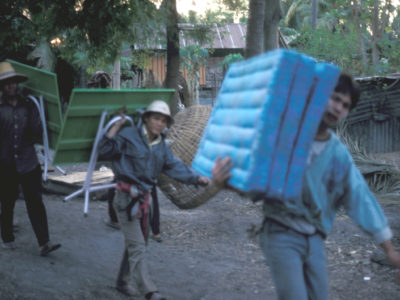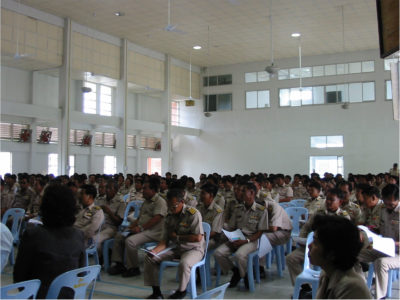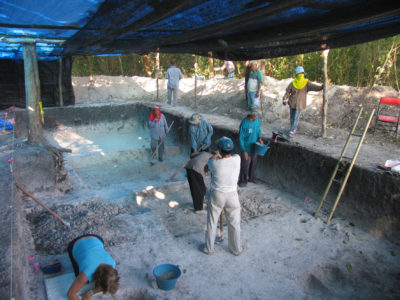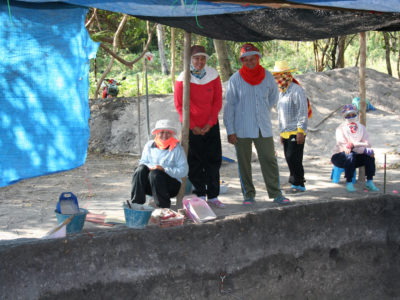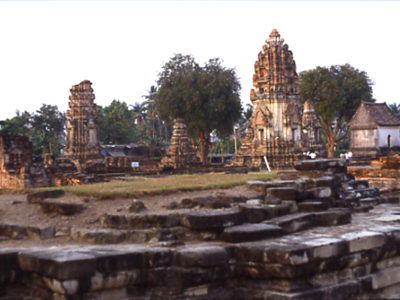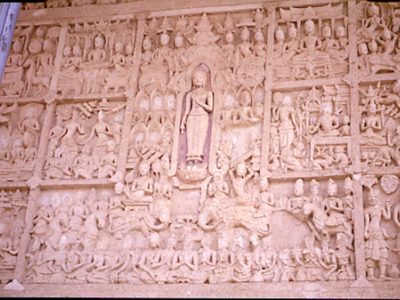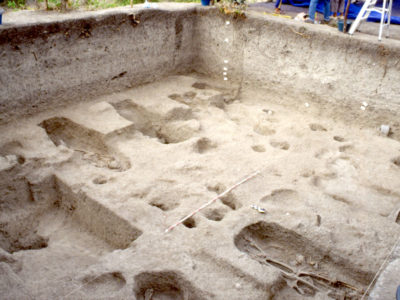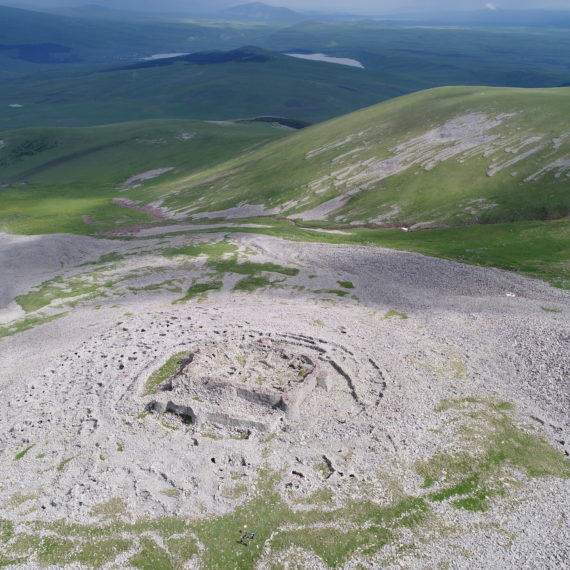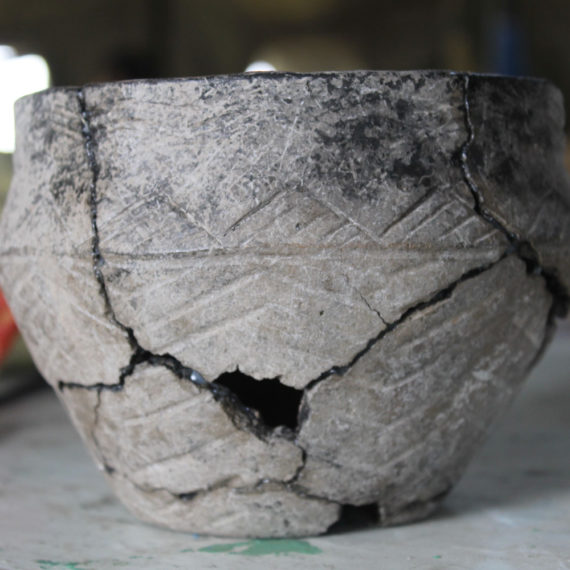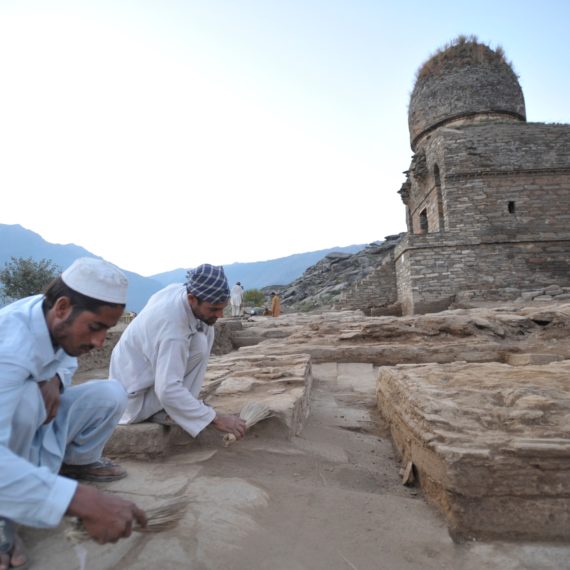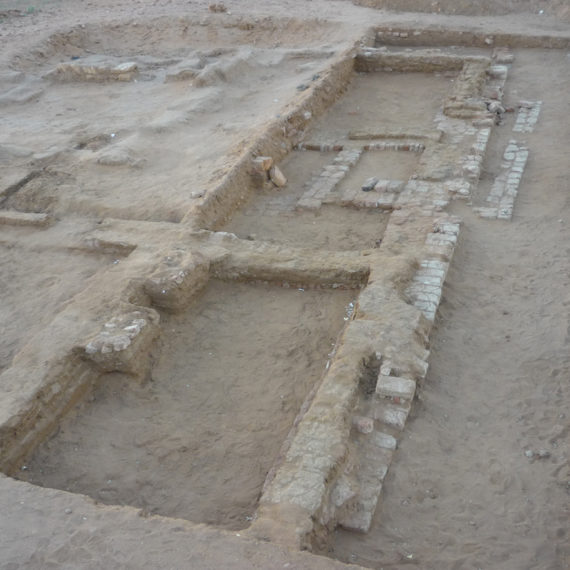
Lopburi Regional Archaeological Project – LoRAP (Central Thailand)
LoRAP started in 1988 with a scientific collaboration agreement between the IsMEO (later IsIAO) and the Archaeology Division – Department of Fine Arts of Thailand (AD-Thai FAD); it has had the constant collaboration (regulated by ad hoc agreements) of the National Museum of Oriental Art ‘G. Tucci ’ for field and study activities and conservation work. Today the project is under the aegis of the International Mediterranean and Oriental Studies Association (ISMEO) which, together with the Ministry of Foreign Affairs and International Cooperation (MAECI), co-finances its activities. LoRAP is co-directed by Roberto Ciarla and – for the Thai part – first by Surapol Natapintu (Thai FAD- Silpakorn University, 1988-2006) and then Pakpadee Yukongdi (Thai FAD, 2007-present).
Co-directors: Fiorella Rispoli, Supamas Duangsakun
Nation: Thailand
Period: 1988 – in course
The area of investigation is the Lopburi floodplain, the eastern margin of the great Central Thailand Plain. The plain has a tropical savannah climate and is cut by the Lopburi and Lower Pasak rivers (eastern tributaries of the River Chao Praya); it is dotted with isolated hills and bordered to the east-northeast by the Petchabun-Dong Phaya Yen chain, highlands of sedimentary (limestone and sandstone) and magmatic rocks; at the zone of contact of these two rock types there are copper minerals that were exploited in ancient times.
The project aims to understand the role played by the first dispersion and expansion of rice cultivation, the growth of craft activities and long-distance exchange in the processes leading to the formation of complex societies in central Thailand between 2000 BC and AD 1000, with particular reference to socio-economic dialectics with Chinese and Indian civilizations.
During c.30 years of activity in the Province of Lopburi stratigraphic excavations have been conducted in Tha Kae (Lopburi District) and Phu Noi (Ban Mi District), in Khok Din and Noen Din in the Khao Sai On (Lopburi District) mining area and, at the invitation of the Silpakorn University Archaeology Faculty, in Ban Pong Ma Nao (Patthana Nikhom District). The finds from these excavations, which are stored in the National Museum of the Palace of King Narai in Lopburi, have been studied and given conservation/restoration treatment during numerous seasons dedicated to this work.
Most of the project’s objectives have been achieved; in particular, it has contributed to the creation of a regional chronological sequence applicable to all central Thailand, which is in harmony with the accepted cultural sequences for the entire Southeast Asian continent. The emergence of rice farming in the region, at the beginning of the 2ndmillennium BC, may be seen in the context of the much wider phenomenon (that began in the 4thmillennium BC) of dispersion of groups of rice farmers from the middle Yangtze Valley through southern regions where, as we also have demonstrated, copper metallurgy spread in the late 2ndmillennium BC. It is becoming clear, then, how the growth of craft activities from the first half of the 1stmillennium BC, was but one of the variables in the more general process of the growth of social complexity, which also involved the first contacts with India, together with more ancient contacts with China, of which tangible evidence has been found in our excavations.
Geoarchaeological surveys have also been conducted, which (although limited by the scarcity of funds) have led to a better understanding of the relationship between humans and their environment over three millennia (2000 BC – AD 1000). This long period of time saw the initial, somewhat limited, interventions to transform the natural swampy environment of the Lopburi Plain by local proto-farmers, which were followed in the 1stmillennium BC by significant deforestation of the mountain slopes and in the plain due to the exploitation of metal ore outcrops, and to the expansion of crop cultivation. The process of socio-economic growth began in the late 1stmillennium BC, with the establishment of centres of social aggregation – settlements surrounded by ditches and embankments – associated with the spread of iron tools and rice paddy cultivation.
This growth was also favoured by the first contacts with the Indian subcontinent (3rd– 2ndcentury BC), as evidenced by the discovery of imports and imitations of “Indian luxury goods”. Control and management of the exchange of these goods by the local elite were strategic for the emergence of state-type structures, which were also based on the adoption and adaptation of Hindu-Buddhist ideological concepts. This socio-political growth is highlighted by the artistic Dvaravati phenomenon, shared by a network of ports, urban and religious centres of Mon language and population in the 7th– 11thcenturies. Of these towns Lopburi, then calledLavo(or Lavapura), was one of the most important; it then became the main Khmer political and artistic centre west of Angkor, at the same time as cultural and commercial exchanges with the Chinese empire were resumed in the 11th– 13thcenturies.






